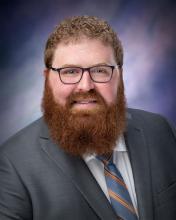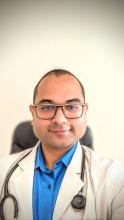Disaster response
Advancing disaster medicine and global health in times of pandemic
Worldwide hardships due to COVID-19 have revealed opportunities for improvement. Disaster education, telemedicine, knowledge sharing, and resource allocation have been highlighted as such areas. In an August 2020 publication, Hart et al. argue, “Every hospital needs a Disaster Medicine physician now” (Hart et al. “Why Every US Hospital Needs a Disaster Medicine Physician Now”).
Every physician must be prepared to be the expert in times of disaster. A survey of U.S. medical students showed that despite few respondents (<27%) feeling adequately educated, >90% are willing to respond to a natural disaster or a pandemic (Kaiser et al. Disaster Med Pub Health Prep. 2009;3[4]:210-16). While natural disasters have increased by almost 35% since the 1990s, a robust approach to disaster education is not routinely implemented across the fields of medicine, nursing, allied health, and health administration (Freebairn. World Disasters Report 2020: Executive Summary. 2020 ed. IFRC. ). Notably, disaster education provides opportunities for multidisciplinary team-building where learners build a foundation of knowledge together. While no ideal educational model has been fully adopted, high-quality educational opportunities include National Disaster Life Support Foundation courses, SALT triage, and ATLS (Homer et al. Prehospital and Disaster Medicine).
Telemedicine has emerged as a very effective means of disaster support through both direct patient encounters and provider education. Tele-triage used to delineate patients requiring urgent hospitalization from those who can be managed at home has proven effective in areas with limited health care facilities (World Health Organization. Coronavirus disease.). Knowledge sharing opportunities from organizations like Project ECHO have allowed for >368,000 learners from 146 countries to exchange information during >8,000 learning sessions (Project ECHO COVID-19 response.).
Physicians of all specialties should continue to develop skills in triage, surge capacity management, ethical/legal issues surrounding disasters, organizational interoperability, and telemedicine, and emphasize skills to ensure their own personal protection.
Christopher Miller, DO, MPH
Steering Committee Fellow-in-Training Member
Sarang Patil, MD
Steering Committee Member
Practice operations
Telehealth and postpandemic care
Telehealth is the use of electronic information and telecommunication technologies to provide care when the physician and the patient are not in the same place. Telehealth has been available for 40 years. The COVID-19 pandemic forced health care providers, systems, and patients to quickly adapt to virtual audio and visual visits, new documentation parameters, billing, and reimbursement structures. Emergency rules have removed the barriers to adoption of home-based diagnostics and virtual visits. It is expected that 20% to 30% post-pandemic care will be provided via telehealth.
Telehealth is particularly beneficial in providing counseling services or managing chronic illnesses, such as COPD and heart failure. There has been an explosion of monitoring devices both wearable and implantable. Some devices, which monitor PA pressure, have been shown to reduce heart failure hospitalizations and all-cause hospitalizations (Shavelle DM, et al. Circ Heart Fail. 2020;13: e006863). Studies have been conducted on home spirometry and oximetry devices in post-lung transplant, ILD (Russell AM et al. Am J Respir Crit Care Med. 2016 Oct 15; 194[8]:989-997), and CF patients (Compton M et al. Telemed J E Health . 2020 Aug;26[8]:978-84). As we move forward, we will have to ascertain what data acquisition is relevant and develop processes to address it in real time.
In this changing landscape of health care delivery, we can anticipate an increase in virtual visits and a trend toward e-consults, which will necessitate further advancements in remote monitoring and assessment and will require us to adopt new practice models.
Caitlin Baxter, MBBS
Steering Committee Fellow-in-Training
Namita Sood, MBBCh, FCCP
Steering Committee Member





